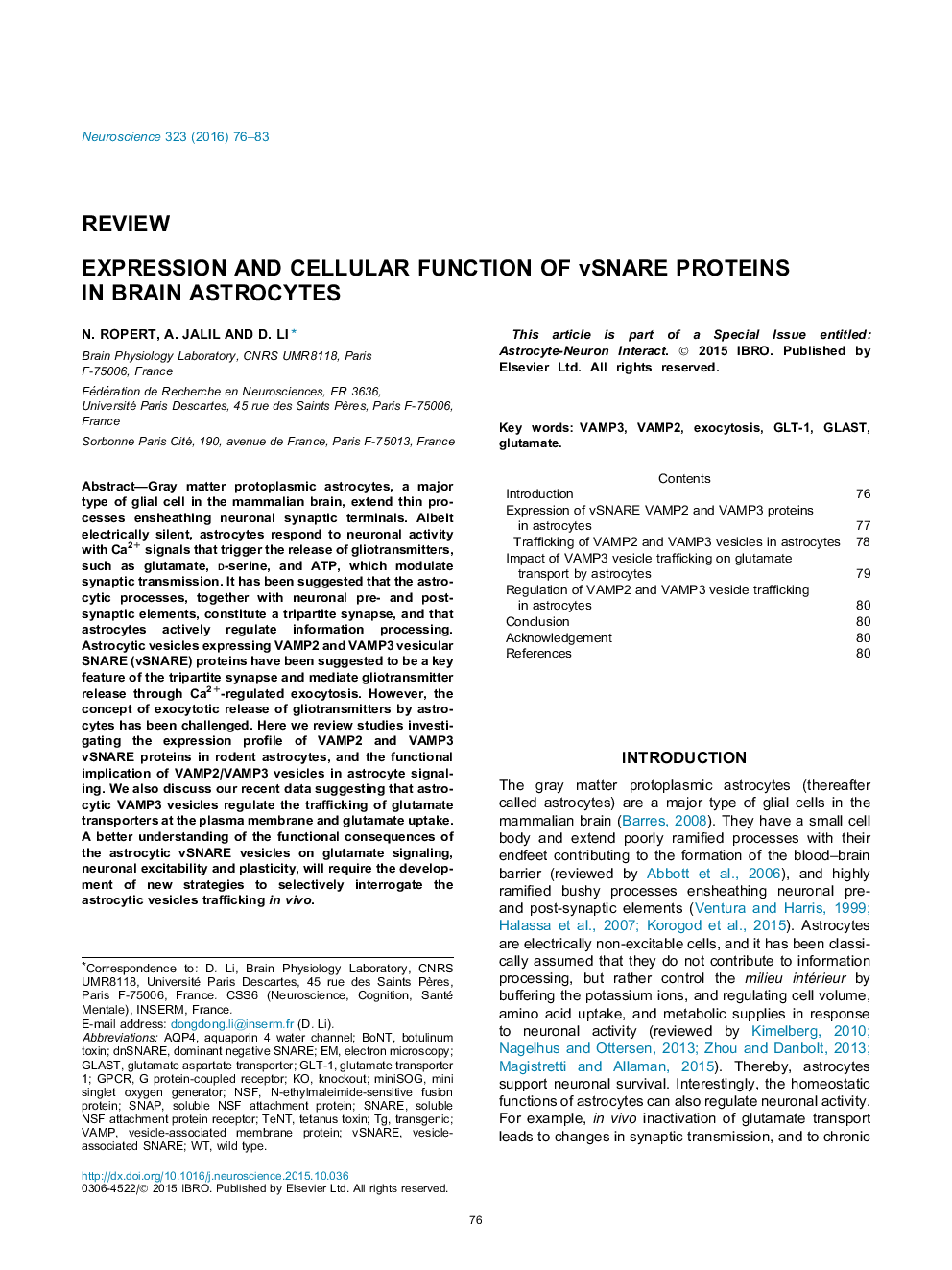| کد مقاله | کد نشریه | سال انتشار | مقاله انگلیسی | نسخه تمام متن |
|---|---|---|---|---|
| 6271085 | 1614753 | 2016 | 8 صفحه PDF | دانلود رایگان |

- We review the controversy on the expression and the function of astrocytic VAMP2 and VAMP3 vSNARE proteins.
- We review the observation that astrocytes express VAMP3, but not VAMP2, vSNARE protein.
- We review the implication of astrocytic VAMP3 vesicles in protein recycling and their modulation by cAMP.
Gray matter protoplasmic astrocytes, a major type of glial cell in the mammalian brain, extend thin processes ensheathing neuronal synaptic terminals. Albeit electrically silent, astrocytes respond to neuronal activity with Ca2+ signals that trigger the release of gliotransmitters, such as glutamate, d-serine, and ATP, which modulate synaptic transmission. It has been suggested that the astrocytic processes, together with neuronal pre- and post-synaptic elements, constitute a tripartite synapse, and that astrocytes actively regulate information processing. Astrocytic vesicles expressing VAMP2 and VAMP3 vesicular SNARE (vSNARE) proteins have been suggested to be a key feature of the tripartite synapse and mediate gliotransmitter release through Ca2+-regulated exocytosis. However, the concept of exocytotic release of gliotransmitters by astrocytes has been challenged. Here we review studies investigating the expression profile of VAMP2 and VAMP3 vSNARE proteins in rodent astrocytes, and the functional implication of VAMP2/VAMP3 vesicles in astrocyte signaling. We also discuss our recent data suggesting that astrocytic VAMP3 vesicles regulate the trafficking of glutamate transporters at the plasma membrane and glutamate uptake. A better understanding of the functional consequences of the astrocytic vSNARE vesicles on glutamate signaling, neuronal excitability and plasticity, will require the development of new strategies to selectively interrogate the astrocytic vesicles trafficking in vivo.
Journal: Neuroscience - Volume 323, 26 May 2016, Pages 76-83